Seven years ago, Lidija Kostic Khachatourian launched a gallery for African art in Dubai. Since then, she has expanded her work in the arts field, setting up the ‘Art and About Africa’ interactive website, and organising and curating a national pavilion at the 2019 Venice Biennale, among other things.
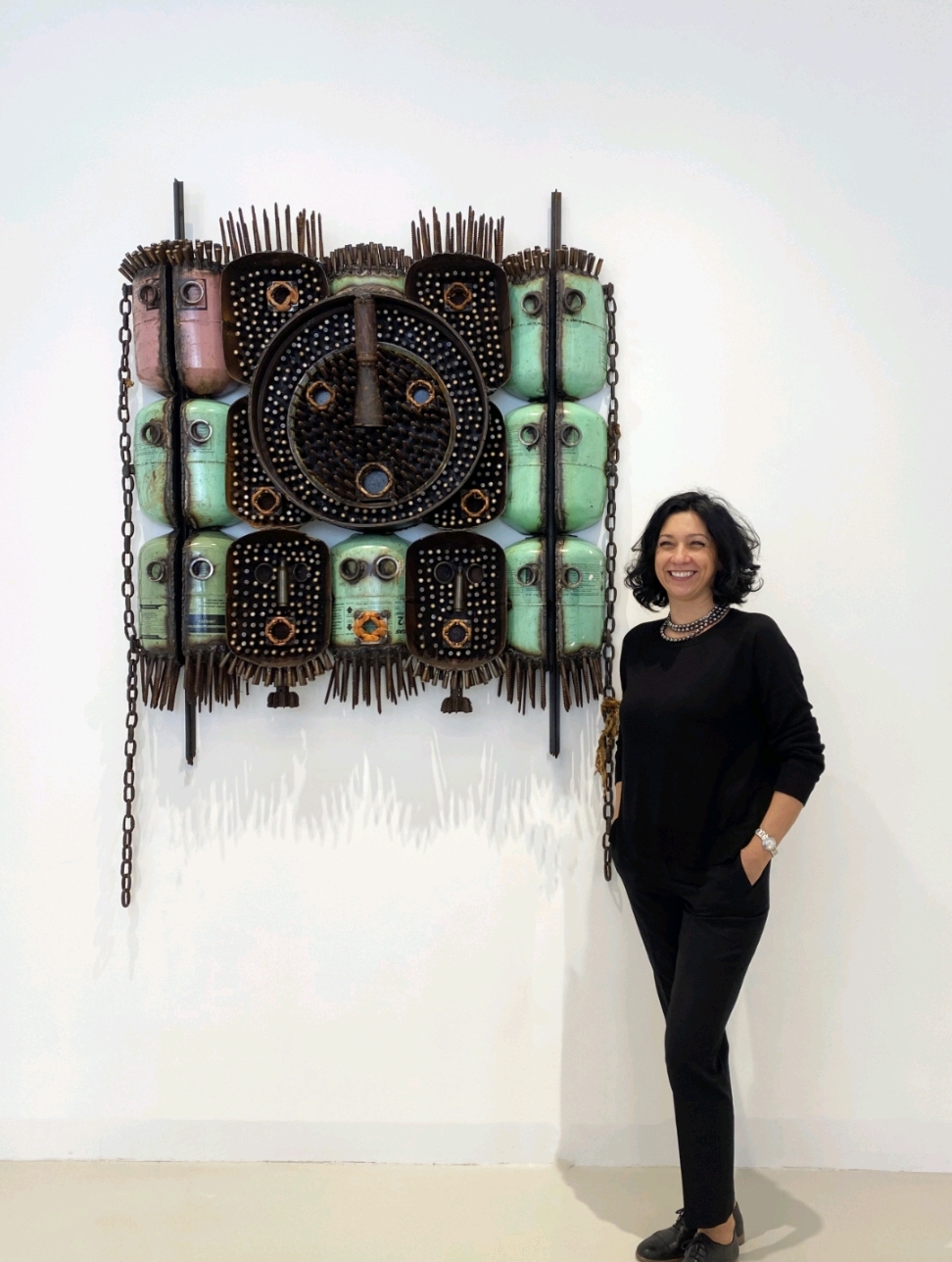
Lidija Kostic Khachatourian was born in Serbia, but grew up in Switzerland where she studied and worked professionally for a time as a financial accountant. After spending many years labouring under the weight of daunting deadlines and the minutiae of accounting practice, she eventually left the profession. On meeting her husband Kristian, they decided to move to Dubai in 2008, where she could focus on their growing family. While there in Dubai, she fell in love with art.
“After many years working in finance as an accountant and finding myself working with art and artists, I felt regenerated and full of beauty. It was amidst this new experience that I decided to commit myself into finding and spreading beauty in the world through art.” she said in an interview with TSA Art Magazine.
Kristian, who is also her business partner, had lived and worked in Liberia for five years and had been collecting African art since 1990. So, there was already a natural inclination to explore the continent’s contemporary art scene. When their children had grown old enough, they travelled in sub-Saharan Africa, visiting and engaging with artists, and gradually building a private collection. This marked the beginning of her journey in the art industry, eventually opening the gallery, named A Kostic Khachatourian Art Project, and more popularly known as AKKA Project.
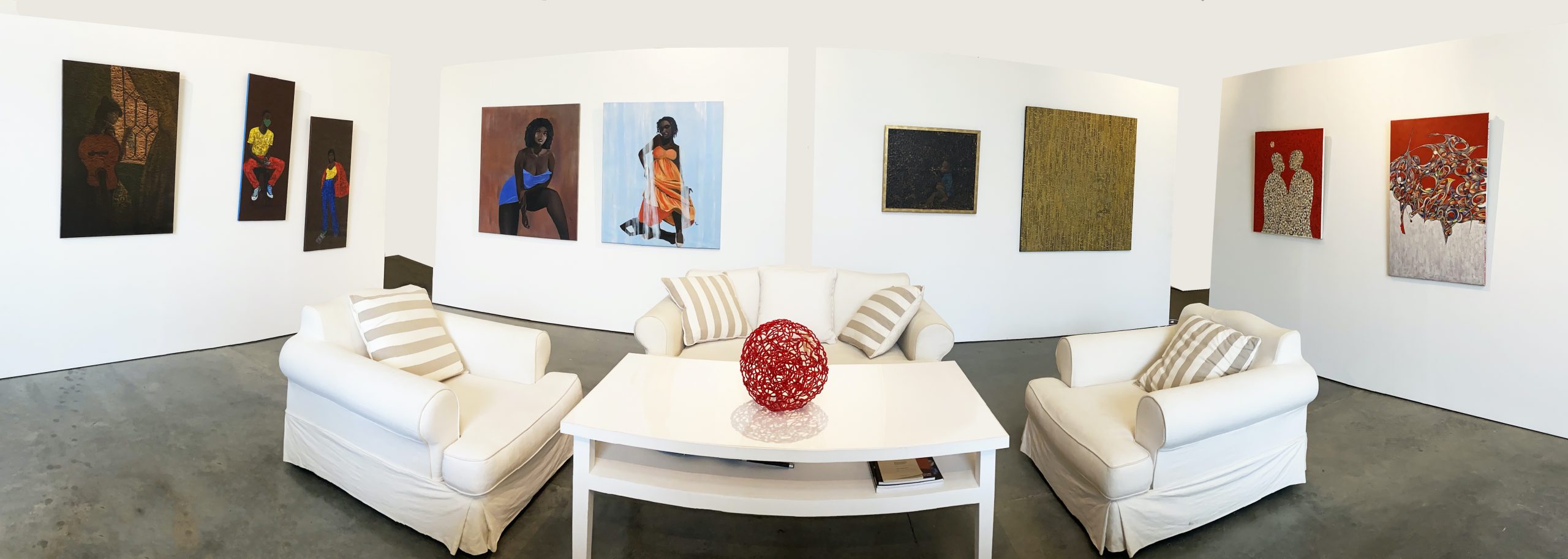
AKKA Project first opened its space in 2016 in Dubai, focusing on works by African artists. Artists from Africa and its diaspora had over the years gained presence and recognition in the global art market. However, in the UAE at that time, nobody was truly representing and exclusively engaging with African artists. It was then that Lidija decided to launch the AKKA Project, focusing on promoting contemporary African art. For their gallery, Khachatourian adopted a more relaxed ambience that not only invites, but also encourages visitors and collectors to explore and interact with many works by different artists. The arrangement in the space emphasizes an artist’s unique style in an intentionally relaxed setting—much like a living room concept. “My concept was to go beyond the usual art gallery” she explained, “I try to create exhibitions, in collaboration with artists that tell a story able to take the visitors on a journey. Our spaces encourage the exchange and invite the visitors to feel like [they’re] at home.”
Before the launch of the AKKA Project Gallery, Lidija began with organising pop-up exhibitions here and there around the UAE. Over time, she has produced many exhibitions, showcasing more than 40 emerging and established artists from Africa.
Three years after the Dubai launch, a second gallery was opened in San Marco District, Venice. Their experience so far in the art market had earned them the courage to scale-up, expand and explore the European market. For this, they started by working on a series of projects which they intended to show at the 2019 Biennale Arte di Venezia with some artists from Africa.
“The three body of works on view at the pavilion were in dialogue with one another, giving off the heavy feeling and consequences of how the country has been affected by bad political decisions and behaviours,” said Lidija of the pavilion presentation at Venice Biennale 2019.
One of these projects was with their Mozambican artist friend, Gonçalo Mabunda. During his visit to Venice in 2017, Lidija discussed the idea of presenting his works, and by the following year, they found a space and also engaged two other artists, Mauro Pinto and Filipe Branquinho, who assisted with presenting a proposal to the Mozambican Ministry of Culture. After much effort and deliberations, they received approval from the Minister to participate in the national pavilion with Lidija as curator. Titled “The Past, The Present and the In Between”, the curatorial idea aimed to show, through the work of these artists, the history of the country, its troubled past and the lingering legacies and consequences of that past on their country’s current reality.
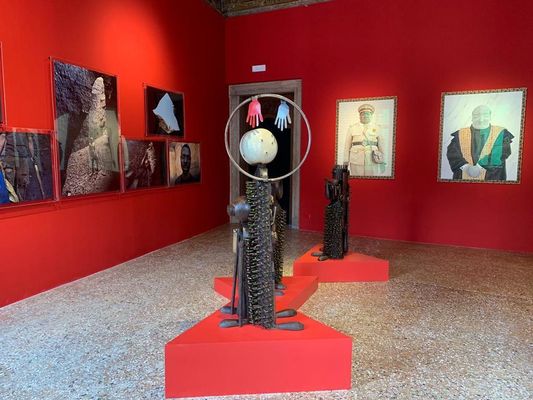
The pavilion was presented in a gallery painted red to represent the bloody civil war that ravaged the country for over fifteen years, between 1977 and 1992. Standing in the middle of the pavilion were three sculptures with human features, created especially for the biennale by Goncalo Mabunda, which used decommissioned weapons from the civil war. Displayed toward the side were mixed-media works by Filipe Branquinho satirically depicting the country’s judicial system. The works were titled “Attorney General,” “Community leader,” and a triptych piece titled “The Three Defendants”. Mauro Pinto, the third artist featured, had on display, photographic works portraying the harsh reality from a small locality of Moatize in the Tate Province. The images from this series titled “Black Money”, documents the working conditions of the town’s miners.
“The three body of works on view at the pavilion were in dialogue with one another, giving off the heavy feeling and consequences of how the country has been affected by bad political decisions and behaviours,” said Lidija of the pavilion presentation at Venice Biennale 2019.
Amidst planning and executing a project of such magnitude with the pavilion, Lidija also had plans underway to set up the online platform called Art And About Africa (AAAA). Conceived in pre-covid era when travelling wasn’t as restricted as it is now, Lidija’s idea was to create a tool that collected in one virtual space, required information on art events and art spaces in Africa for many travellers willing to explore, discover, and engage with art on the continent. With such a vital tool easily accessible, anyone interested in knowing about art in Africa could readily find information in a downloadable format.
AAAA was online for little over a month when the pandemic hit,” Lidija said to us at TSA, “And as a platform which aims to support the artists from the continent, it was a natural reaction to try to help them. The thought behind the title ‘Art: An Essential Need’ was to emphasise to everyone, the importance of art in all forms and the dire need to support artists in order for them to sustain their art production.”
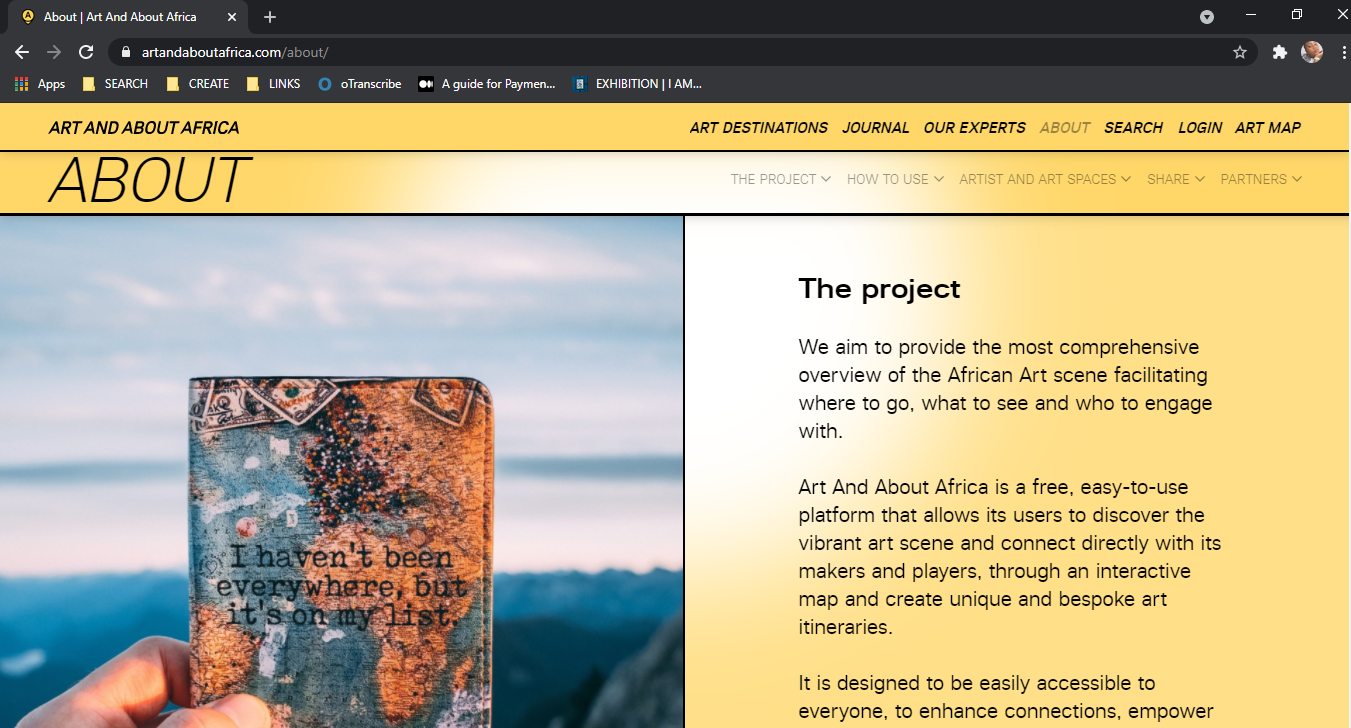
Designed with an interactive map, Art and About Africa allows travellers to engage directly with artists, museums, art spaces, galleries, curators, non-profit organisations and foundations. In February 2020, the website went live but could not be explored and used as fully as was intended due to the Covid-19 pandemic.
When the pandemic struck, it sent shock waves through the economy, severely affecting many, including artists and art institutions. With growing concern for how artists would survive, Lidija, through the Art and About Africa platform, launched an initiative to raise emergency funds for artists living in Africa, which she called ‘Art: An Essential Need’. She accomplished this by inviting artists living in Africa and the diaspora to submit artworks for an e-book publication that would be used to raise funds on a crowdfunding platform. The e-book featured artworks and accompanying texts by the artists selected from the open call together with limited edition prints and original works from guest artists.
“AAAA was online for little over a month when the pandemic hit,” Lidija said to us at TSA, “And as a platform which aims to support the artists from the continent, it was a natural reaction to try to help them. The thought behind the title ‘Art: An Essential Need’ was to emphasise to everyone, the importance of art in all forms and the dire need to support artists in order for them to sustain their art production.”
With over 80 submissions and supports from artists like Cyrus Kabiru, Mohamed Amin foundation, Linda Hollier, Mariska Nell, and Pedro Pires, a total of $15,500 was raised and equally distributed among thirty-one selected artists from Ethiopia, Kenya, Nigeria, South Africa, Mozambique, Egypt, Zambia, Cameroon, Angola, Tunisia.
While the reception of Art And About Africa has been very positive, there have also been some constructive feedbacks and suggestions being considered as more fine-tuning is being done. Further work is being done to create a network of art experts and practitioners that will be available to users by the time the world returns to normal.
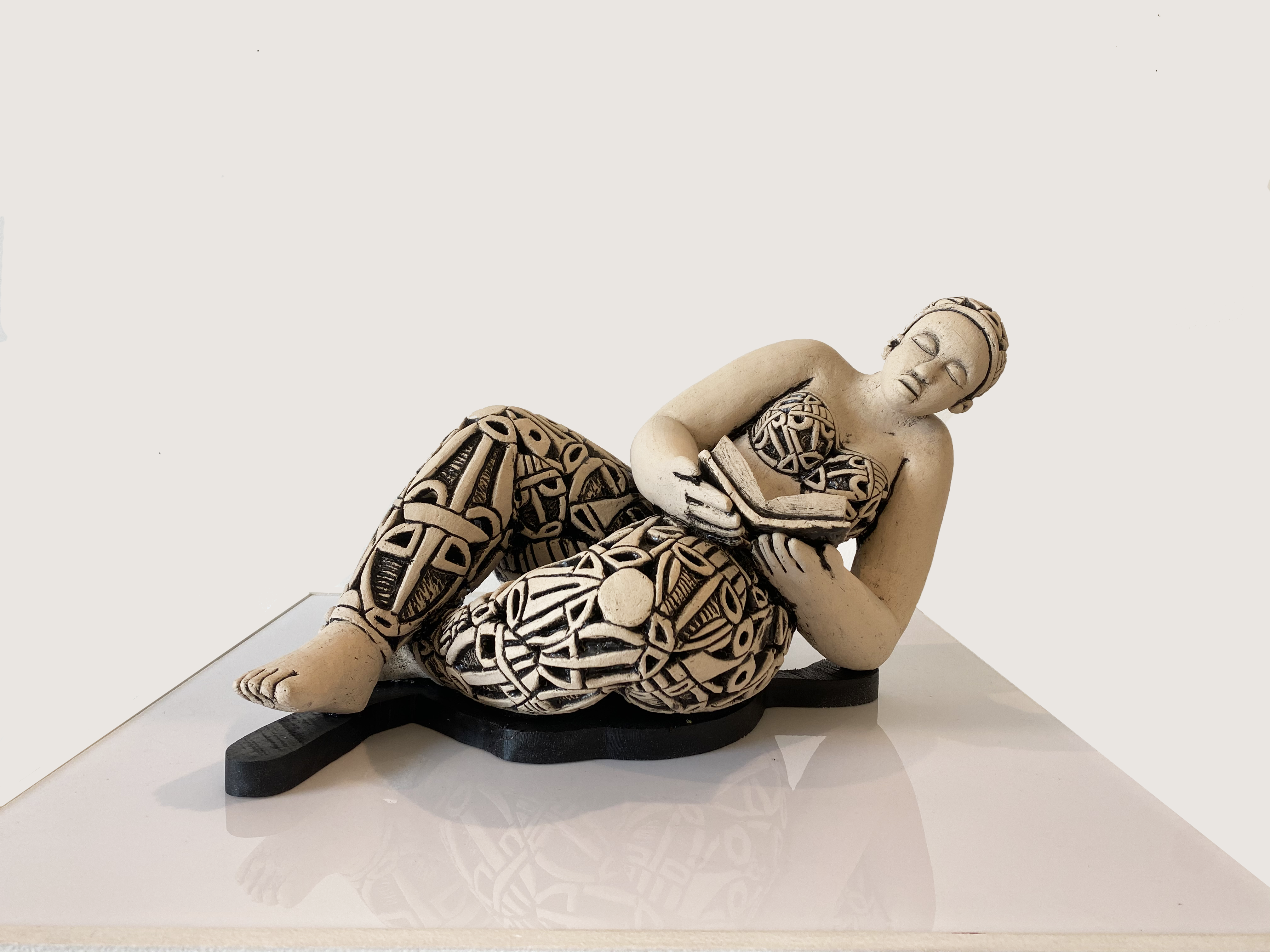
In examining Lidija’s imminent plans, it is apparent that she is enthusiastic about representing artists from as many African countries as possible. In May, there will be an exhibition showcasing works by four Zimbabwean artists in Venice. In September, a group show by Ethiopian artists and in October, a solo show by Kelechi Nwaneri, featuring works from his 2-month residency at AKKA Project Venice in 2020. Currently on view at AKKA Projects Dubai, is a group exhibition by eight female artists titled “Deus ex Femina”. The show features works by Margaret Ngigi, Pamela Enyonu, Djakou Nathalie Kassi, Patti Endo, Rewa, Reinata, Arogunmati Omoyeni, and Lizette Chirrime from Kenya, Uganda, Cameroon, Nigeria, and Mozambique. Working in different media and styles, the artists explore their diversity and convey their stories, emphasising the experiences and inspirations behind their works.
With her work on the African art scene, Lidija has shown that with every stride made, with every accomplishment recorded, she continues to explore further, the scope of what is possible in making African art more accessible and better experienced.




